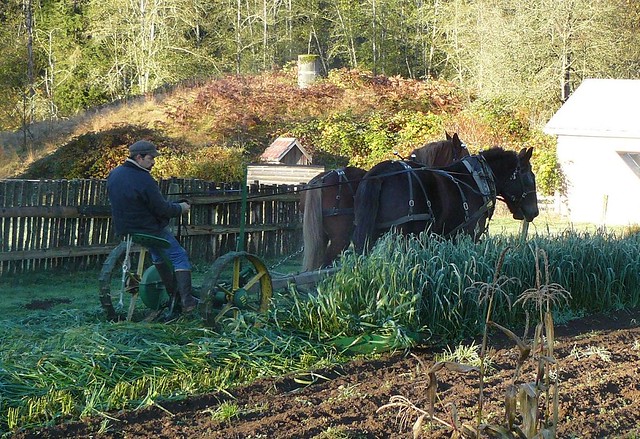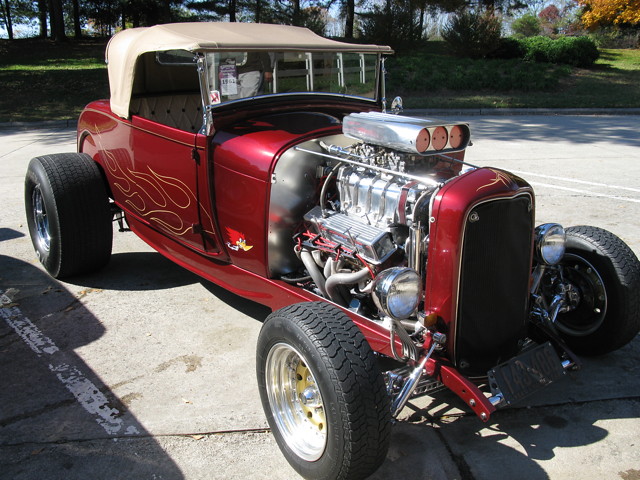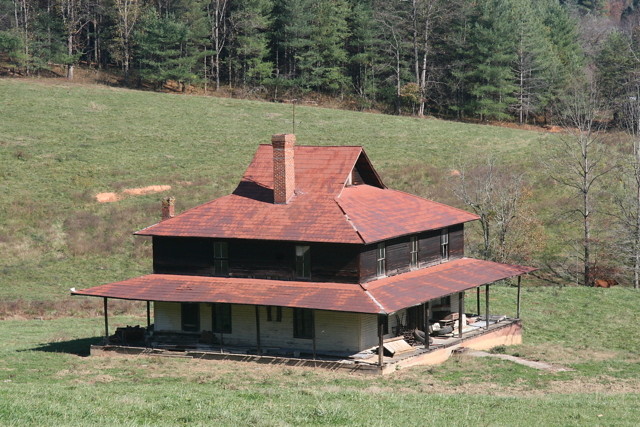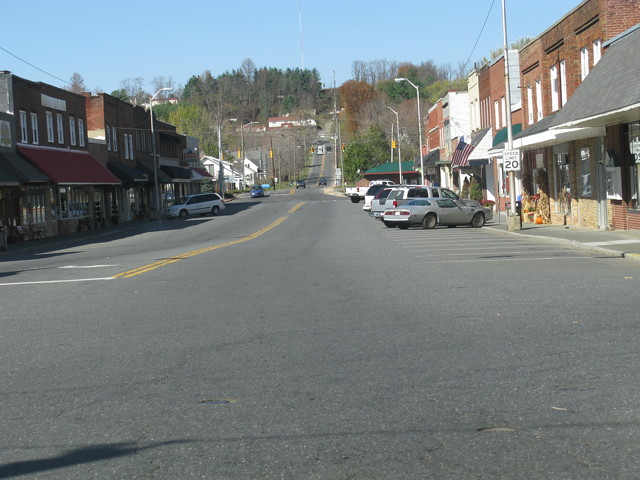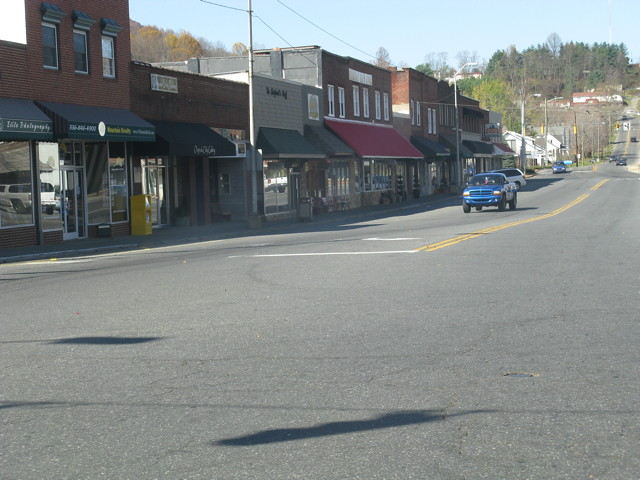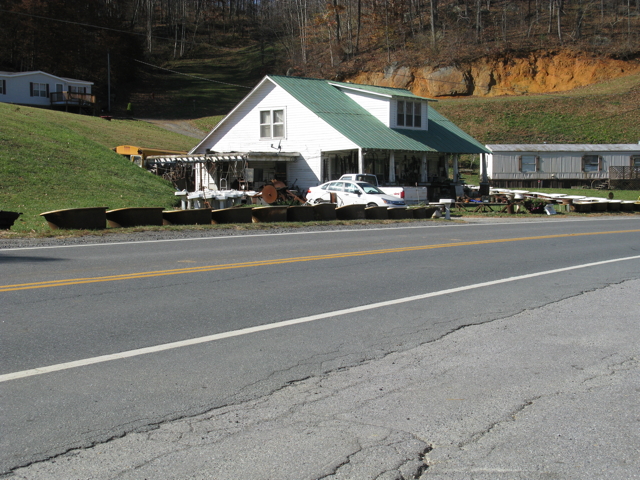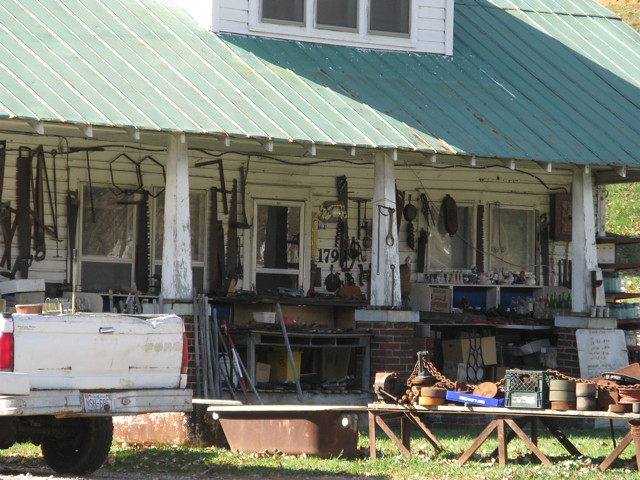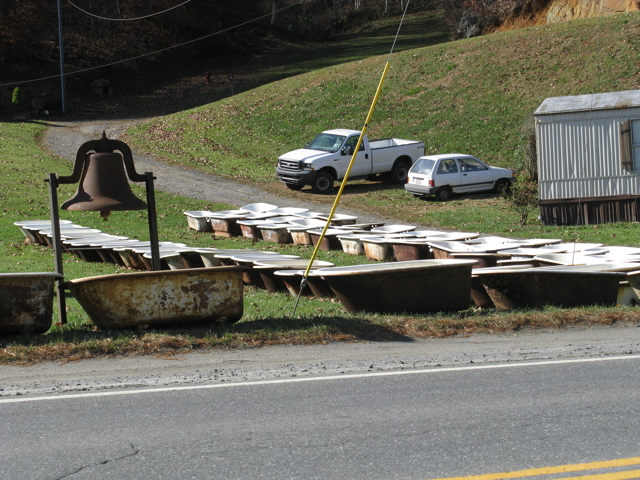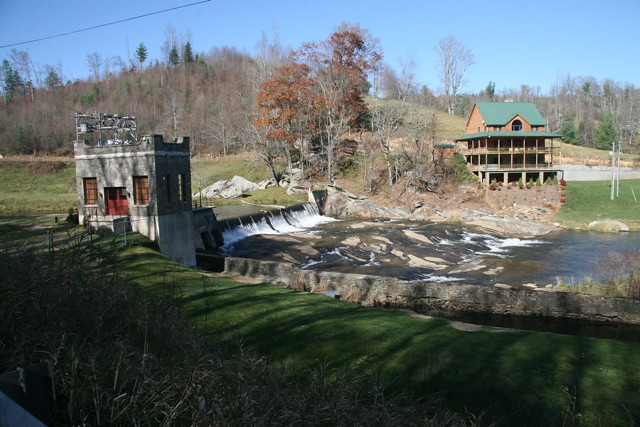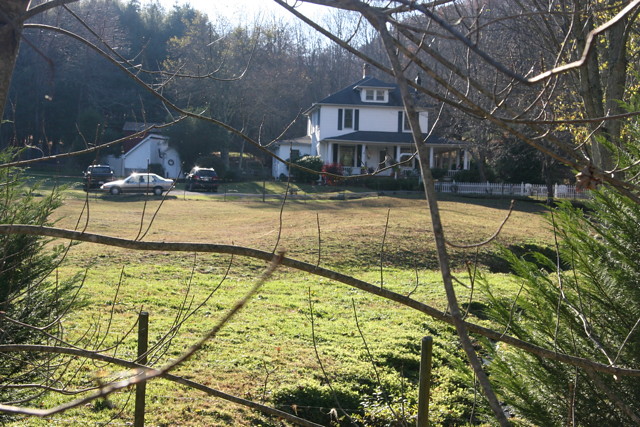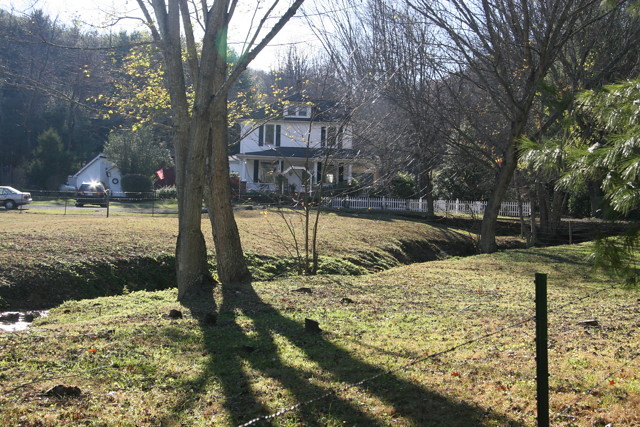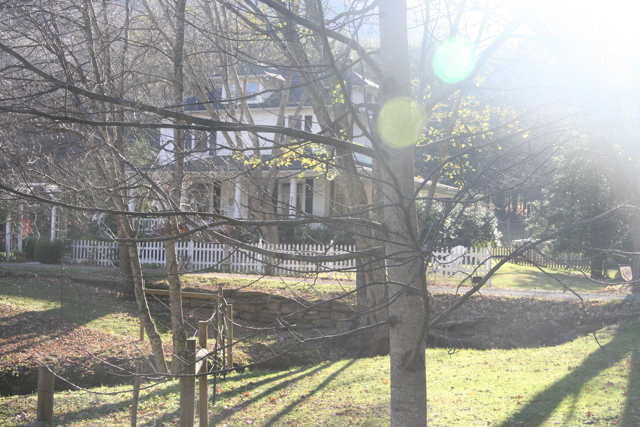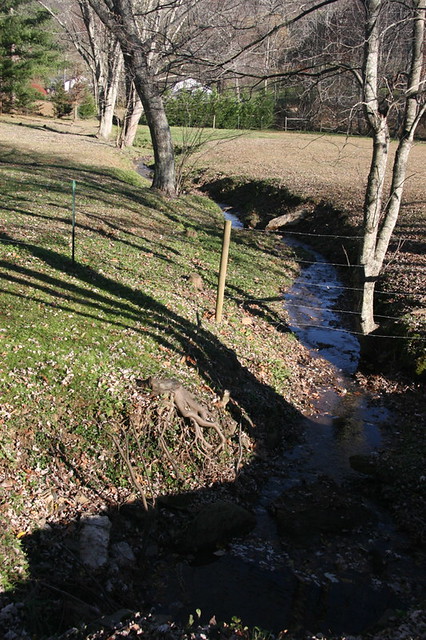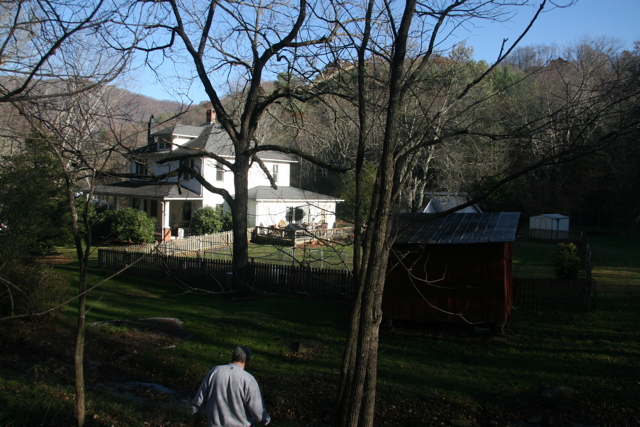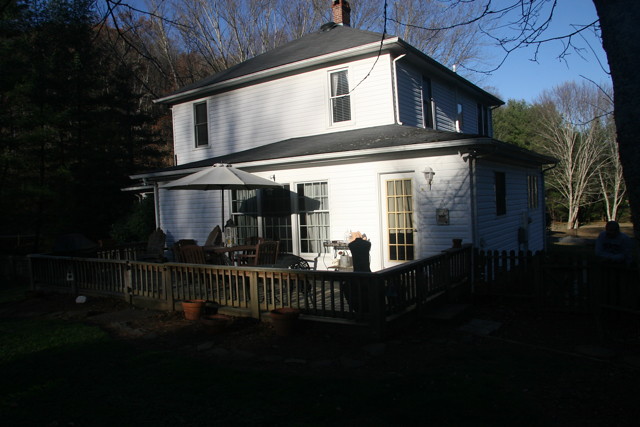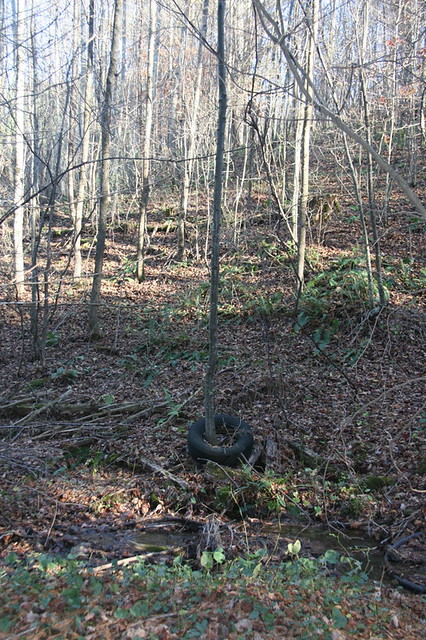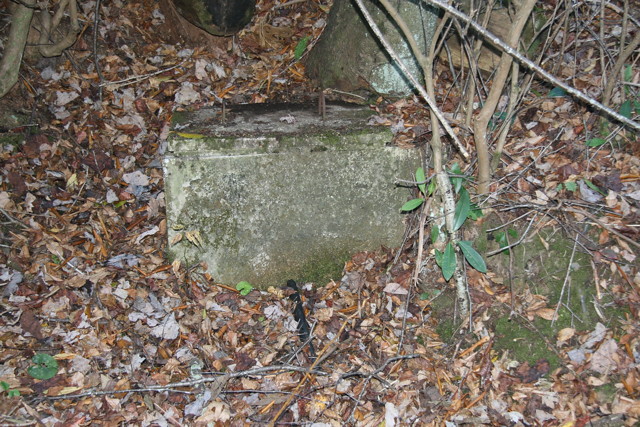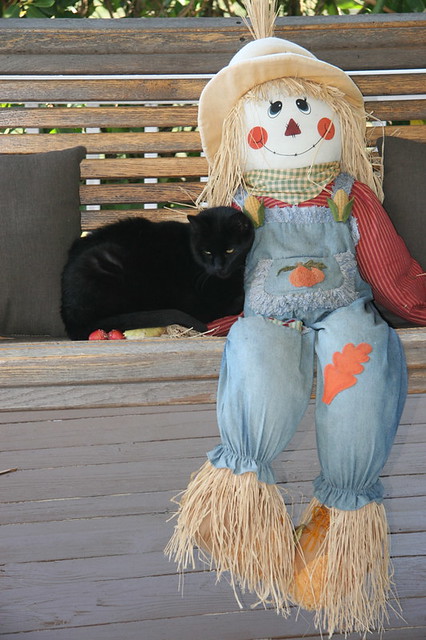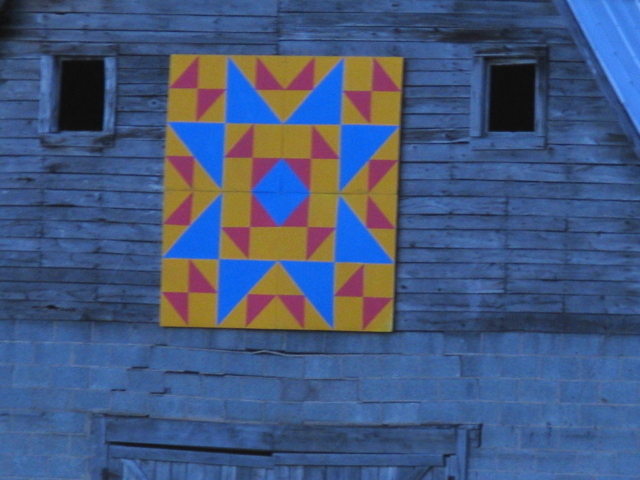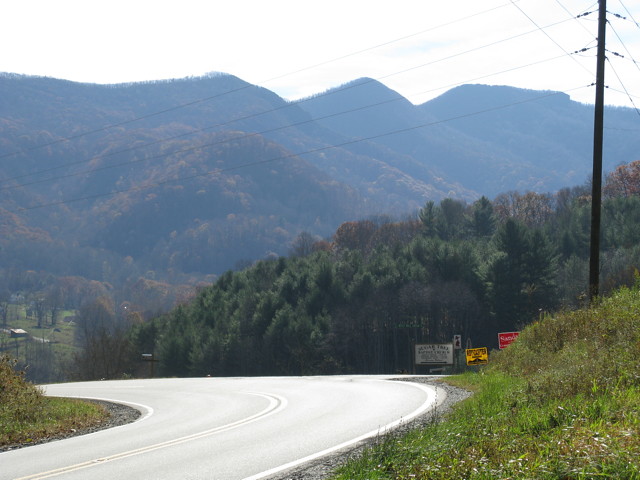Made another day trip to Ashe County, NC, today -- this time to take a second look at a house and property I've been studying for the last two weeks.
This was one of the highlights of the trip -- a circa 1932 Ford roadster. My brother and I used to build models of these when I was young.
We built models of engines just like this: a Chevy (probably) small-block V-8 with a blower (supercharger) and twin 'quad carbs. (Street talk, 'ya know.) When you goose the throttle, the three round discs on the front of the intake open and force huge amounts of air down through the carbs and the mixture is compressed by the paddles inside the blower (the big chrome unit underneath the two carburetors) so as to force larger amounts of gas/air mix into the engine, thus providing greater combustion and more speed. Oh, man . . .
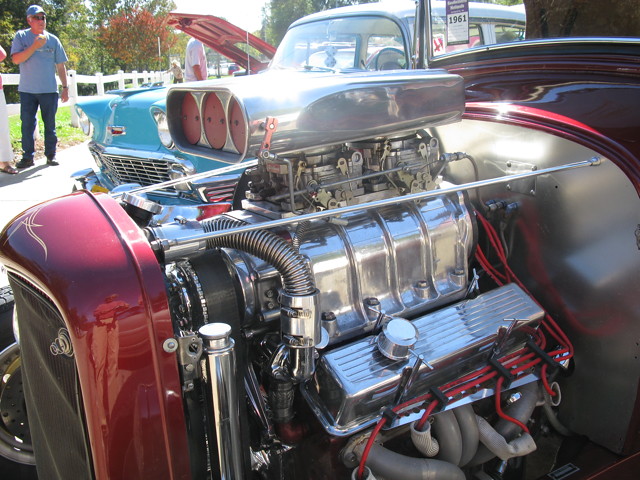
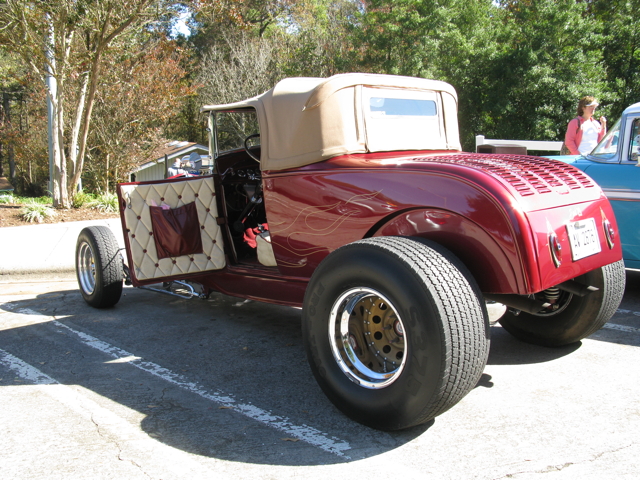
I've been captivated by this house for years. It's on Highway 16 north of Wilksboro, headed toward West Jefferson. It's been sitting exactly like this for the five years I've passed it. It sits in an odd place -- on a slope in a pasture. I've always liked the wrap-around porch and the obvious, ample square footage. I can't help but wonder about the people who called this house "home" and why they are no longer there. The world is so full of stories that no one will ever know.
They did have a nice view . . .
I first got acquainted with West Jefferson, NC, when my son Daniel and his bride, Jennifer, bought a ROUGH but classic (i.e., old, traditional) mountain cabin just north of the town after graduating from Appalachian State. Pure mountain water came into the cabin through a plastic pipe from a spring that bubbled out of the earth a couple hundred yards up the mountain behind the cabin; the grey water from the kitchen sink ran out into the side yard, which I came to find out was not unusual for old mountain cabins. Their first baby, Ellen, was born in a giant water-birthing pool they set up in the cabin, assisted by a mid-wife. Such is life in the Blue Ridge Mountains of Ashe County.
West Jefferson today is growing -- new restaurants, art galleries, and shops are filling the main drag in the old storefronts, and a thriving farmer's market runs two days a week. This is West Jefferson's main street coming into town:
West Jefferson is known for its Appalachian-themed murals painted on the sides of buildings in the downtown area:
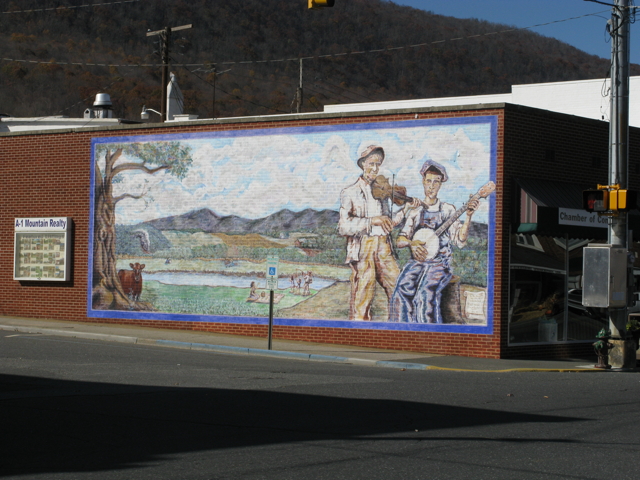
Jefferson Station is a former furniture factory in the heart of downtown WJ. The factory shut down years ago and sat empty until a developer bought it five years ago to turn it into a combination condo/commercial/office space -- not a bad idea. The condos were loft-type, with 24-foot ceilings. I read about the development on the web site of the Mountain Times newspaper published in nearby Boone, NC, and called to see what was the deal. I drove to West Jefferson the next weekend and put down a deposit on a small condo -- they were just beginning to build them out. I hired an architect to draw blueprints for adding a second-floor loft to my condo where I would have my office/work area. It was an awesome floor plan -- about 1,350 square feet total (900 downstairs, 450 in the loft). My plan was to sell my house in Charlotte and move into the condo in WJ for a couple years so I could continue to look for a farm to buy in Ashe County. Long story short -- a couple of family complications developed in Charlotte and I decided it wasn't a good time to move, so I got my deposit back. And the developer put my condo back on the market the next day for $20,000 more than the contract I had signed. So I left 20 G's on the table. A year ago, I saw an ad on a WJ real estate web site for a condominium like mine in Jefferson Station for $40,000 more than my contract had been. I know -- I should have moved, lived there 2-3 years, and sold. HIndsight is a killer:
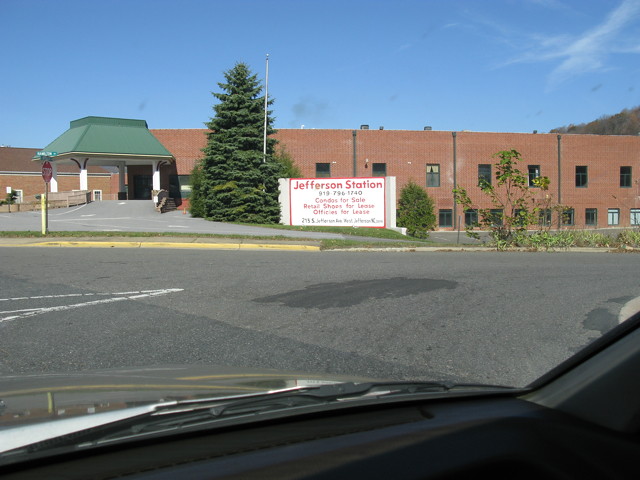
I always laugh when I pass this "store" on the way out of town. This guy specializes in Appalachian cultural miscellany:
His specialty -- for years -- seems to be old bathtubs. These may be the same ones that were sitting there five years ago. Who buys old bathtubs? Mountain farmers use them as watering troughs for livestock, I know. Other than that . . . ? I'd buy the bell in a heartbeat.
I was a bit early for my appointment to see the house, so drove through Warrensville toward Creston on Highway 88 and stopped to look at this power-generating station on the North Fork of the New River.
How'd you like to live in that house and fall asleep listening to this every night?
The house I've been looking at is 6-8 miles north of West Jefferson in a VERY small crossroads called Warrensville. The house was built around 1920 by the Roten family who were prominent farmers and business folk in Ashe County. It's been upgraded quite a bit since, and has gone through several owners, but the bones are original and solid. It's one of the most uniquely designed old farmhouses I've seen in terms of the interior layout. All the original wood remains unpainted: solid wood floors and beadboard on the walls and celing. (Pictures of the interior of the house are here.)
The house sits on 4.6 acres with two streams running through the property. Its water comes from a spring that runs into a 500-gallon cistern and bladder system that supplies the hose, with propane and wood-fired boilers (use either/or) for heating the water that runs through radiators in the upstairs. The downstairs is heated by a propane forced-air furnace in the crawl space. Their is a flu in the living room where a traditional wood stove once sat and which could possibly be re-opened. The current owners have a horse that is pastured in the primary open area in front of the house. I would use this rich pasture area -- fertile mountain land with eight years of horse manure mixed in -- for food production:
Another view with the larger of the two creek's bed visible in the foreground. The owners showed me a beautiful photograph of the house taken during last year's snow -- you'd think you were looking at a Currier & Ives print, it was so gorgeous:
Another view of the creek. The owner said his daughters spent many happy summer days playing in the creek when they were young:
The back of the house:
The back and deck from the opposite corner:
The owner, Ken, loves this: a tire on the adjoining property had a seedling growing up through it when they bought the house. He decided to let it lay, and now the tree is 20 feet tall, begging the question: "How'd that tire get around that tree?"
The spring box, full of perfectly-clear water that comes out of a spring over which the box sits. It has about two feet of ice-cold water in it. Ken slid the cover off and cleaned a handful of tree roots off the filter (growing from the large tree in the upper right of the picture). The water runs through a pipe about a hundred yards to a cistern near the back of the house.
There is a seven-stall barn with a second-floor hay loft -- perfect for little kids to create a fantasy world and for barn-cats to have their litters:
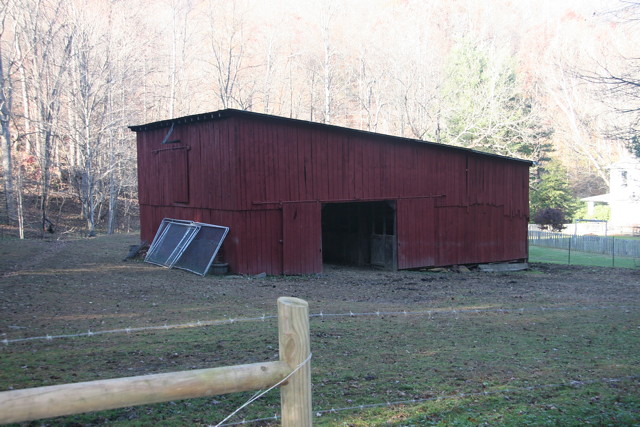
This is the propane boiler that heats water that runs through radiators to heat the second floor of the house. The 750-gallon wood-fired boiler is to the left -- either can be used to heat the circulating water -- wood or propane. You can't see it very well in this photo, but the propane boiler is sitting on top of the concrete spring race -- a long narrow trough that most farmhouses had -- a step up from the traditional spring house -- through which ran ice-cold spring water to keep milk and other foods cold before refrigeration was common. The spring race hasn't been used in years, and would require relocating the propane boiler. But the idea of that cold water running through the race is a HIGHLY romantic notion to me -- one I would love to restore. I have seen them active in two other farmhouses I looked at a few years ago in Ashe County:
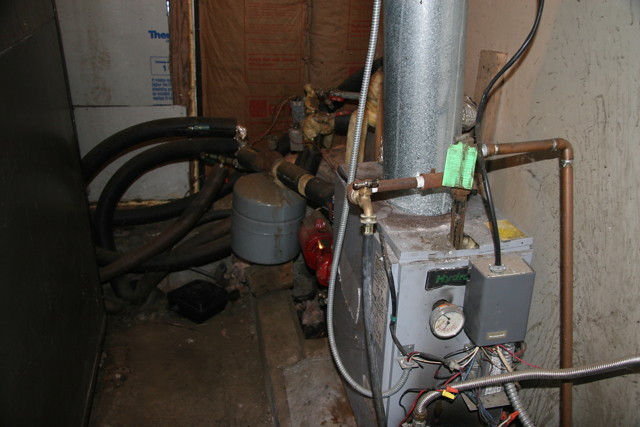
In talking with another West Jefferson couple who lived in the house for 19 years, selling about 20 years ago, the wife told me about a huge stone under the house that had some kind of "carving" on the face of it -- possibly from Indians or settlers many years ago. The house was built over the stone and the stone served as a base for a pier supporting the house's foundation. Ken was kind enough to go into the crawl space and show me the stone. The area where the light is shining is the carved portion -- difficult to tell what it represents. They've never had it examined by an artifact expert -- but it would be fun to explore:
And the requisite farm cat cuddled up next to the scarecrow in the swing on the front porch:
Driving back on Highway 163 outside West Jefferson, saw another of the traditional quilt blocks painted on the side of a barn, part of the Quilt Trails of Western North Carolina project. (It was almost dark -- not much light on the picture.)
What do you think? The house is being shown by realtors almost daily -- five showings this weekend. It's historic, priced fairly, and in move-in condition (the bathrooms and kitchen have all been seriously upgraded -- one-year old stainless appliances in the kitchen, etc). I don't see it lasting very long.
This is what keeps me going back to the Blue Ridge Mountains:
